Introduction
In an increasingly competitive market, customer loyalty has become a critical focus for businesses aiming to foster long-term relationships and drive repeat purchases. Loyalty programs are evolving beyond traditional models to include innovative strategies that cater to diverse customer needs and preferences. This article delves into various types of loyalty programs, including points systems, tier-based rewards, membership benefits, cashback incentives, community engagement, hybrid models, gamified challenges, experience-based rewards, social media integration, and value-based initiatives.
Each section provides insights into how these programs can be effectively implemented to enhance customer satisfaction, boost engagement, and ultimately build a loyal customer base. By exploring successful examples and identifying key elements of effective loyalty strategies, the article offers a comprehensive guide for businesses looking to refine their approach to customer loyalty in today's dynamic market.
Points Programs: Simple and Scalable
Points systems stand out as one of the most popular gamified loyalty initiatives, effectively driving engagement by rewarding purchases. Data from a November 2023 survey by Marigold and Econsultancy reveals that over half (55%) of adults worldwide claim that offering points or reward systems is the top way to ensure their return. This highlights the importance of simplicity and accessibility in such initiatives.
Starbucks exemplifies this model's success through its intuitive system that allows patrons to accumulate points effortlessly, which can be redeemed for exclusive merchandise and services. Similarly, Sephora's Beauty Insider initiative keeps customers engaged by offering a seamless experience to accrue and utilize points for various rewards, fostering repeat purchases.
However, not all points systems are successful. The short-lived Plenti initiative by American Express struggled due to the inconsistent value of points across different companies, confusing consumers. This highlights the importance of a straightforward and cohesive system. Furthermore, personalization plays a crucial role. A large Asian retailer discovered that many consumers initially deemed low value were, in fact, high value based on gross margin per item, illustrating the need for accurate data to tailor rewards effectively.
In essence, the success of points systems lies in their ability to offer clear, easy-to-understand rewards that encourage repeat business, while leveraging data to personalize the experience. As retail leaders expect shoppers to favor cost over allegiance in 2024, improving reward schemes with more tailored discounts and clear benefit systems will be crucial.
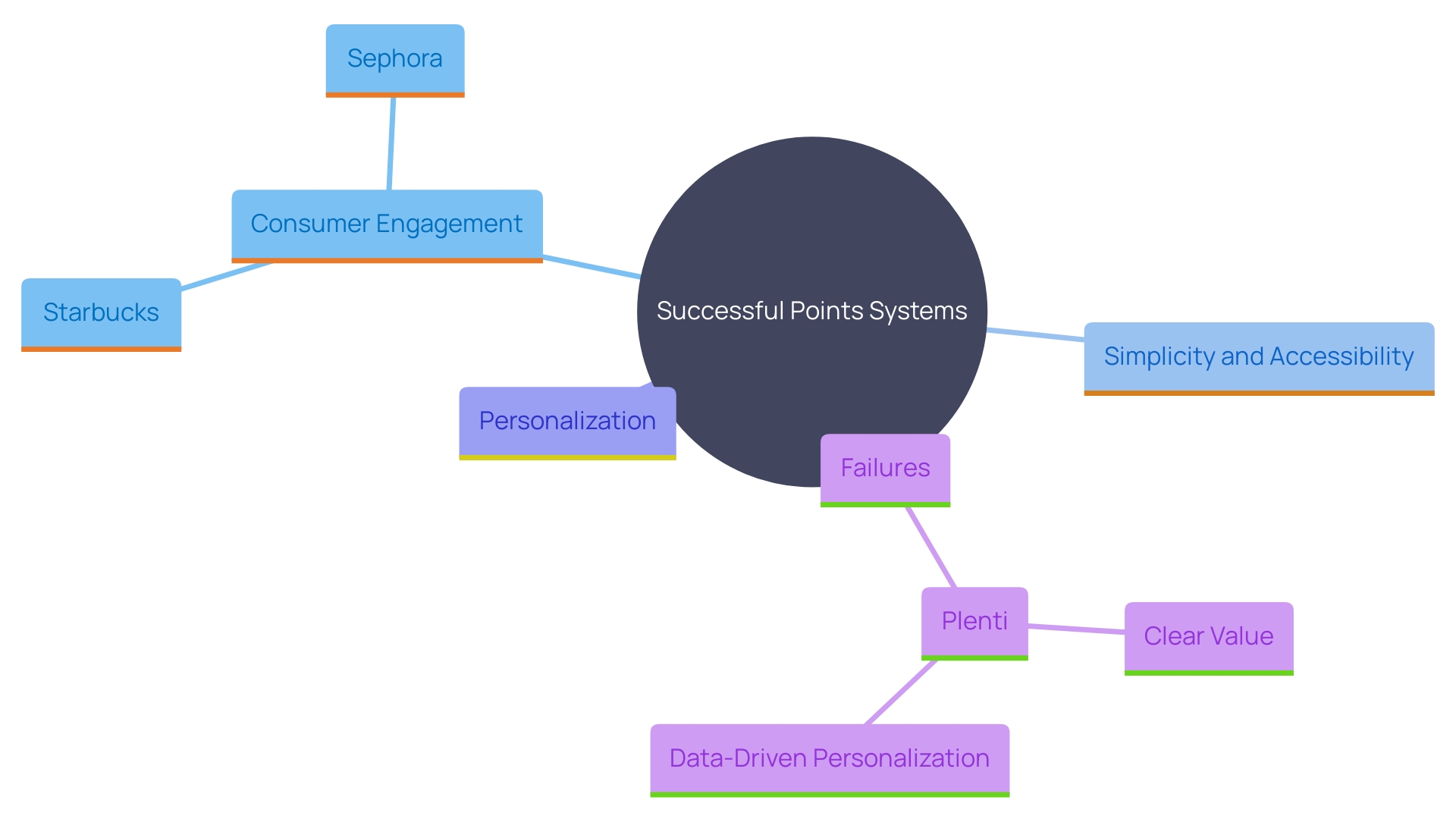
Tier-Based Programs: Encouraging Repeat Purchases
Tiered reward systems are a strategic method to acknowledge patrons according to their expenditure levels, motivating them to attain higher tiers for enhanced advantages. This method not only encourages greater expenditure but also cultivates a stronger bond with the company. For instance, airline reward schemes are famous for providing benefits like complimentary upgrades and priority boarding, encouraging patrons to achieve elite status. Based on a recent survey, 79% of customers are more inclined to endorse brands with strong loyalty initiatives, which highlights the significance of a well-organized tier system.
However, the success of these initiatives hinges on simplicity and transparency. Customers value ease of participation and clear pathways to earning and redeeming rewards. This was clear in the case of Plenti, a U.S. rewards initiative by American Express, which struggled due to the complex and varied point systems among participating companies, ultimately leading to its downfall. On the other hand, companies that prioritize personalized experiences see higher engagement. Research indicates that 90% of consumers who believe companies understand their buying preferences are more likely to purchase additional products.
Moreover, experiential factors have become increasingly significant. For hotels, experience has four times more impact on purchase frequency than tangible benefits, while for airlines, it is more than twice as influential. This shift emphasizes the necessity for customer retention initiatives to advance beyond simple transactional incentives to incorporate unforgettable and tailored experiences. As highlighted in a recent report, many retailers have successfully maintained and even increased their devoted clientele by adopting intelligent methods to win and retain allegiance, with 53% observing a rise in reward program participation.
In summary, tiered reward systems can be very effective when created with the client in focus, highlighting simplicity, tailored experiences, and transparent reward routes. This not only improves client satisfaction but also fosters long-term commitment and support.
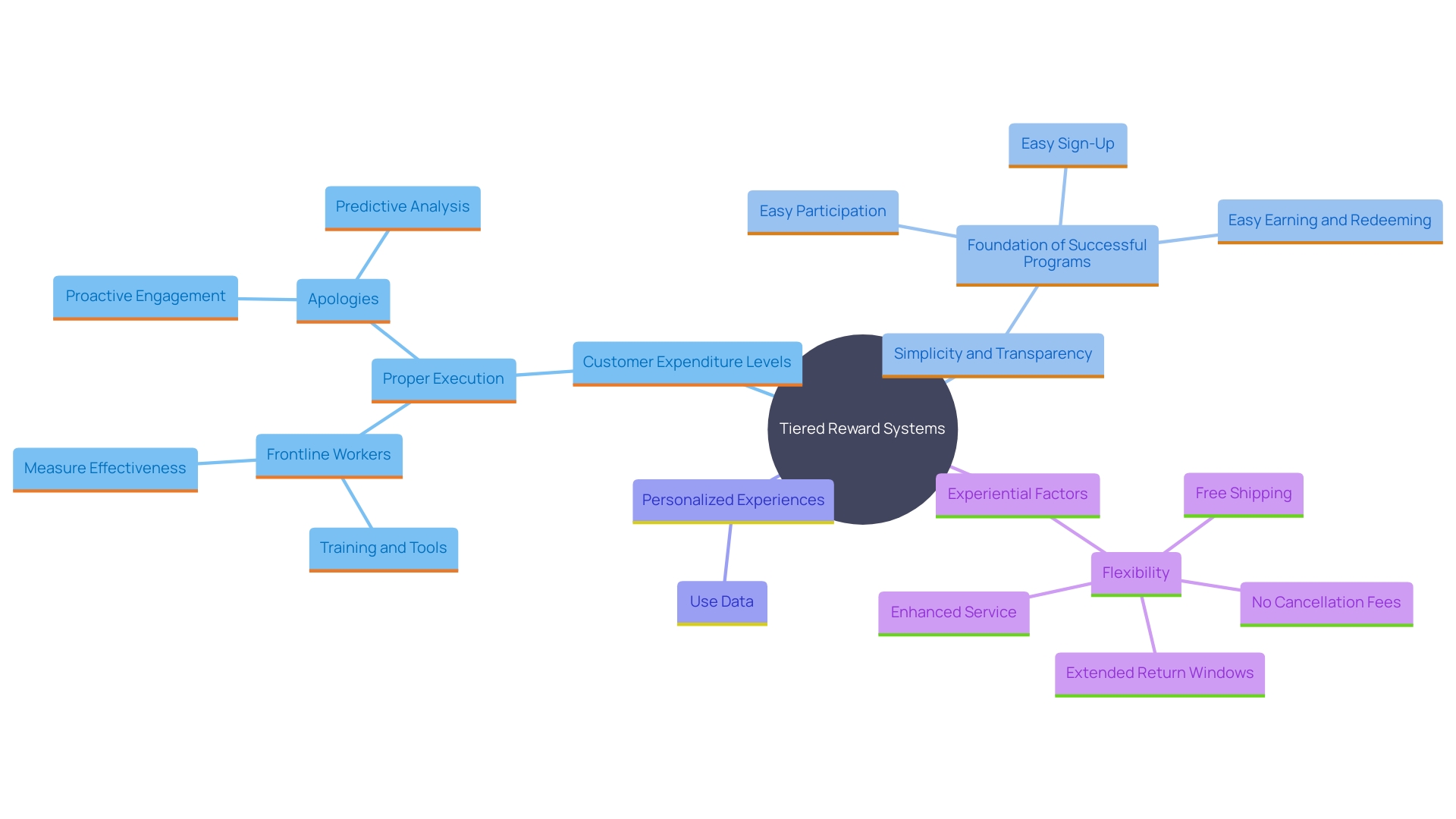
Membership Programs: Exclusive Benefits for a Fee
Membership schemes offer individuals unique access to advantages for a charge. Amazon Prime exemplifies this model, offering free shipping, streaming services, and more. Prime members also enjoy unique perks such as the 'Try Before You Buy' service, which allows them to test out clothes, shoes, and accessories for seven days before deciding to purchase. Additionally, Prime Reading offers access to a diverse collection of materials, enhancing the membership's value. This model not only increases loyalty among patrons but also improves the perceived worth of the membership, promoting continuous involvement. As Mattinger noted, 'We continue to see very positive feedback and increased use of benefits from Prime members, and we continue to see growth in Prime membership and high rates of renewal.' With over 200 million Prime members globally as of 2021, it's evident that the blend of convenience, value, and variety propels the initiative's success and continued participation.
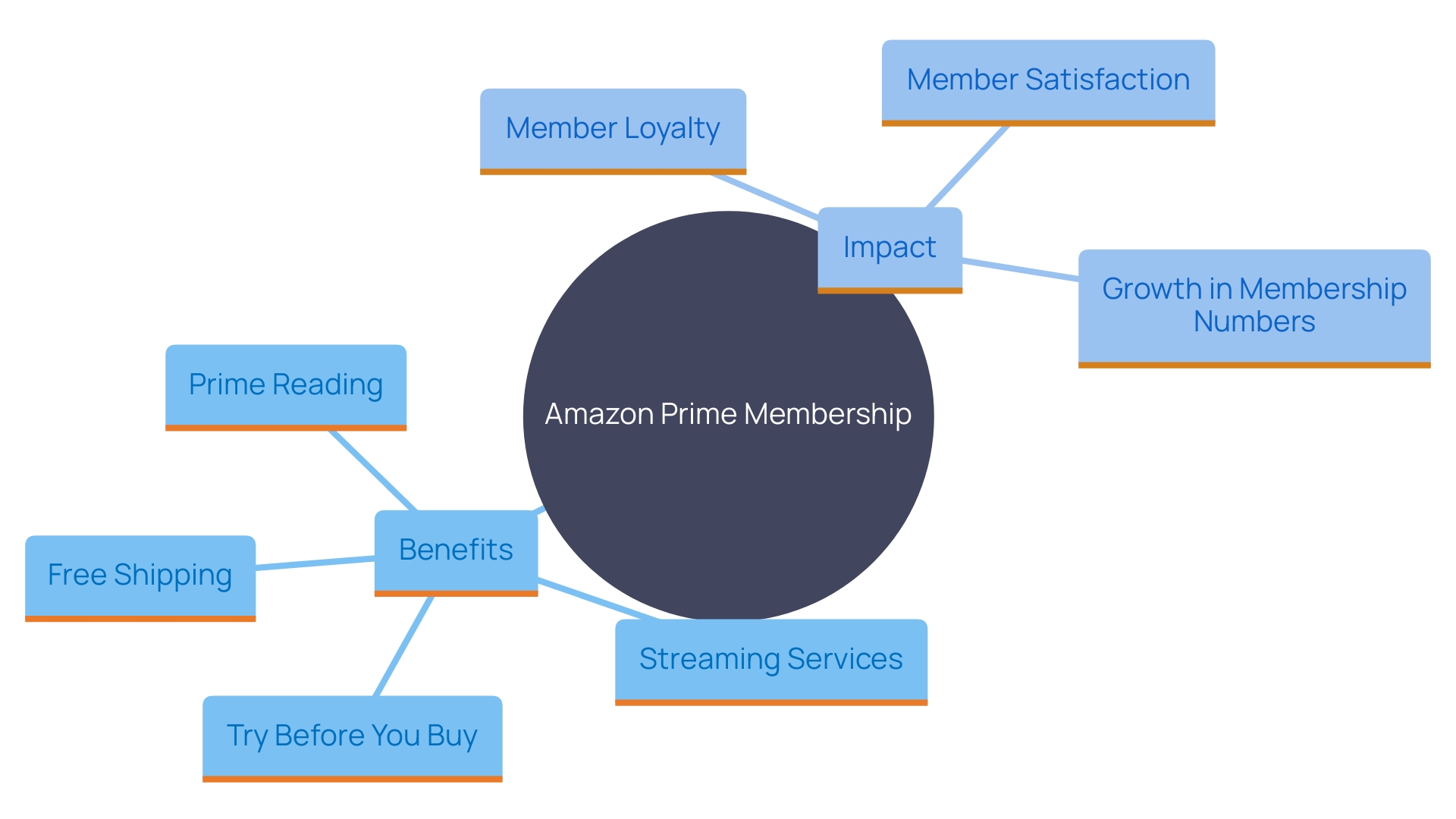
Cashback Programs: Immediate Rewards
Cashback programs, which provide individuals a percentage of their purchase back in the form of cash or credits, have become a popular way to enhance engagement and satisfaction. According to a Rakuten Reward Research survey, 63% of online shoppers take advantage of cash back, rewards, and discounts in at least half of their purchases. This immediate reward system not only encourages spending but also fosters a sense of satisfaction among consumers. 'For instance, companies like Rakuten have successfully implemented cashback models that encourage consumers to shop more often, with a significant portion of shoppers planning to use rewards and cash-back offers to buy gifts during the holiday season.'. Retailers usually offer cashback as a fixed amount or a percentage of the purchase price, ranging from less than 1% to more than 20%. This strategy has proven effective in retaining customers and boosting sales, as evidenced by the success of platforms like Quidco and TopCashback, which partner with thousands of brands including Amazon and Argos. Quidco reports that its average member earns £280 a year through cashback. 'These initiatives are not only advantageous for consumers but also for retailers, as they drive increased revenues across the entire platform.'. Furthermore, with the increase in conscious spending and inflation awareness, consumers are increasingly searching for methods to handle their finances more efficiently, making cashback options even more attractive.
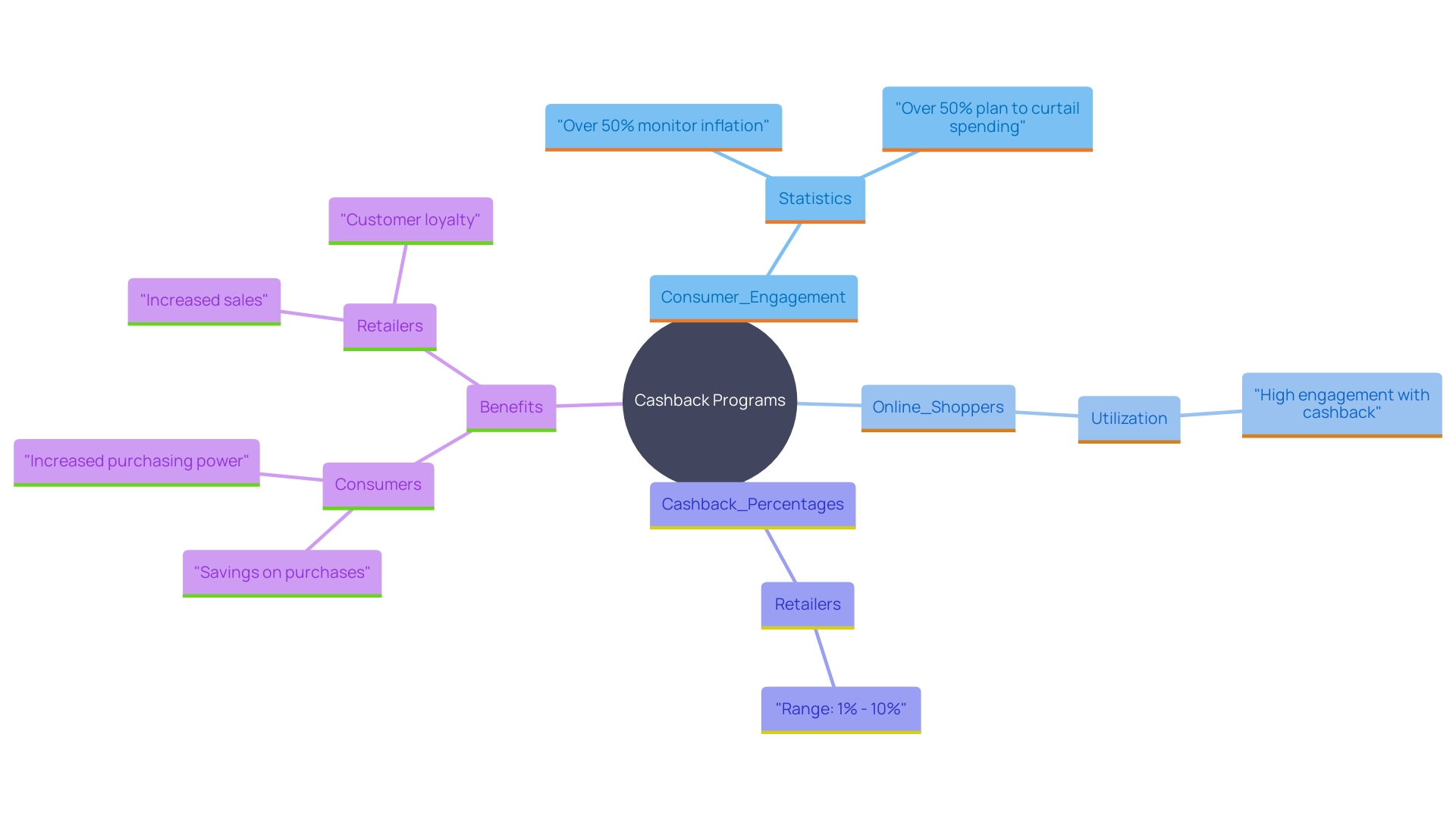
Community-Based Programs: Creating a Sense of Belonging
Community-focused reward initiatives revolve around fostering a strong feeling of belonging among patrons. Nike, for instance, has developed platforms where individuals can share their experiences, challenges, and achievements, fostering a robust Community Connection. 'This approach not only boosts loyalty to the company but also corresponds with data indicating that 81% of consumers wish to establish a connection with a company.'. Additionally, 89% of clients stay committed to companies that align with their principles, rendering community-focused initiatives an effective means of keeping patrons. The effectiveness of such initiatives is clear in efforts like Pampers Club, which provides a range of useful services and information to parents, establishing the name as a resource rather than merely a product supplier. This strategy has assisted in preserving client allegiance even in difficult financial circumstances, as emphasized in a recent report by dunnhumby, where 70% of major retailers effectively held onto or expanded their devoted clientele. By concentrating on common principles and establishing robust community connections, companies can develop initiatives that connect profoundly with their clientele.
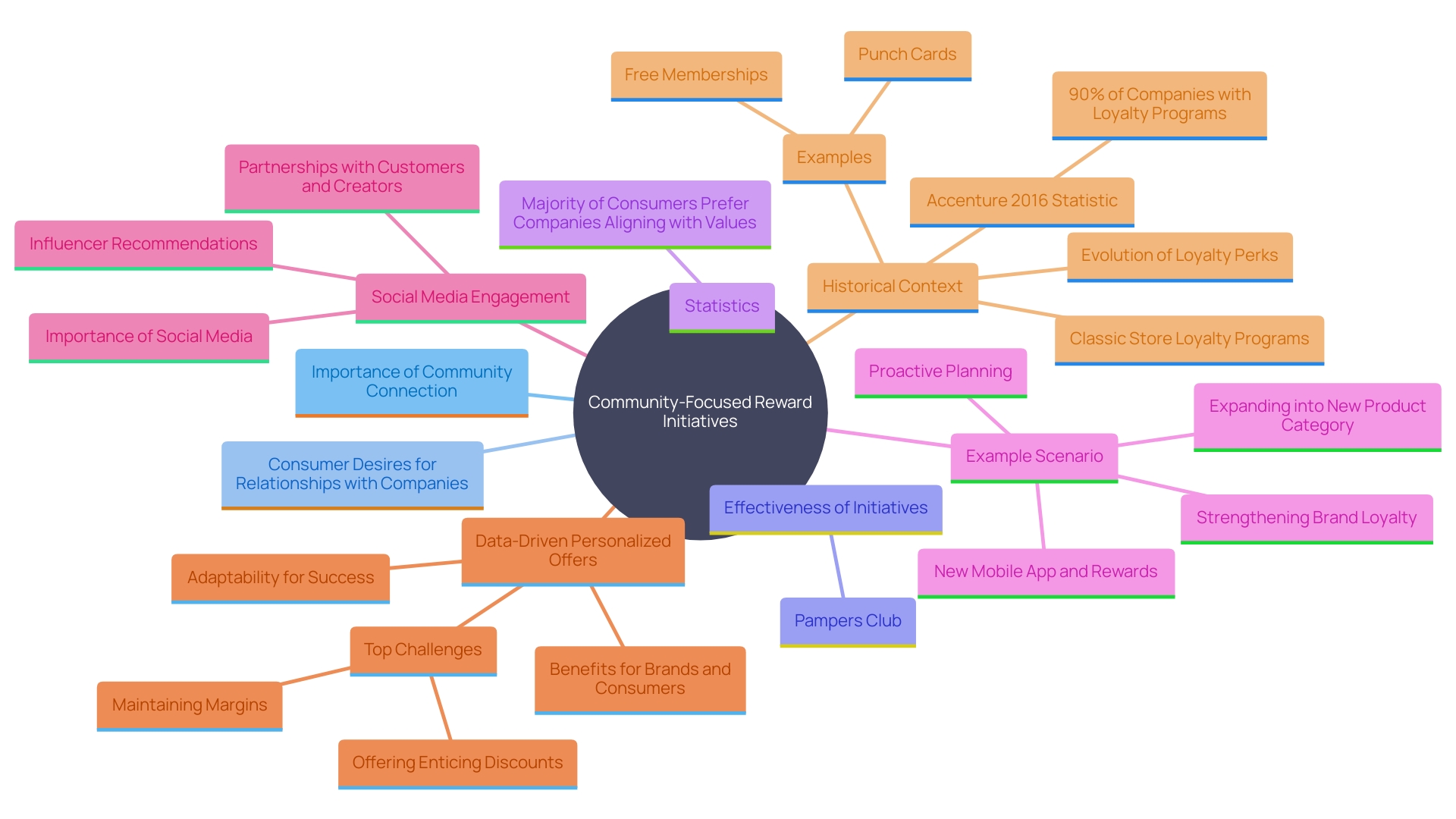
Hybrid Loyalty Programs: Combining Multiple Strategies
Hybrid programs merge different loyalty strategies, providing individuals with multiple methods to earn rewards. For example, companies might establish a points system along with tier levels, enabling clients to gain advantages from both methods. This flexibility caters to different customer preferences, maximizing engagement.
Insights from recent studies highlight a significant trend among younger generations, who are increasingly interacting with various companies. Gen Zers and millennials engage with approximately 1.3 times as many brands as baby boomers, indicating a growing preference for varied commitment options. This change is apparent in the travel sector, where consumer banks are launching self-branded travel awards systems, providing more adaptable rewards redemption and improved user experiences in comparison to conventional customer retention schemes.
Moreover, the significance of experiential factors in customer retention programs cannot be overstated. For example, giving prior information or special access to deals can greatly improve the perception of value associated with the company. Brands that effectively integrate user experiences across various platforms, including online and physical locations, tend to see higher engagement and commitment.
According to the 2024 Global Consumer Trends Index, 4.3 times higher annual spend was identified among members who redeem personalized rewards. This emphasizes the necessity for brands to concentrate on personalization and smooth user experiences to uphold and expand their devoted clientele. As the commitment environment changes, companies must adjust by providing varied rewards and guaranteeing clear, satisfying experiences for their clients.
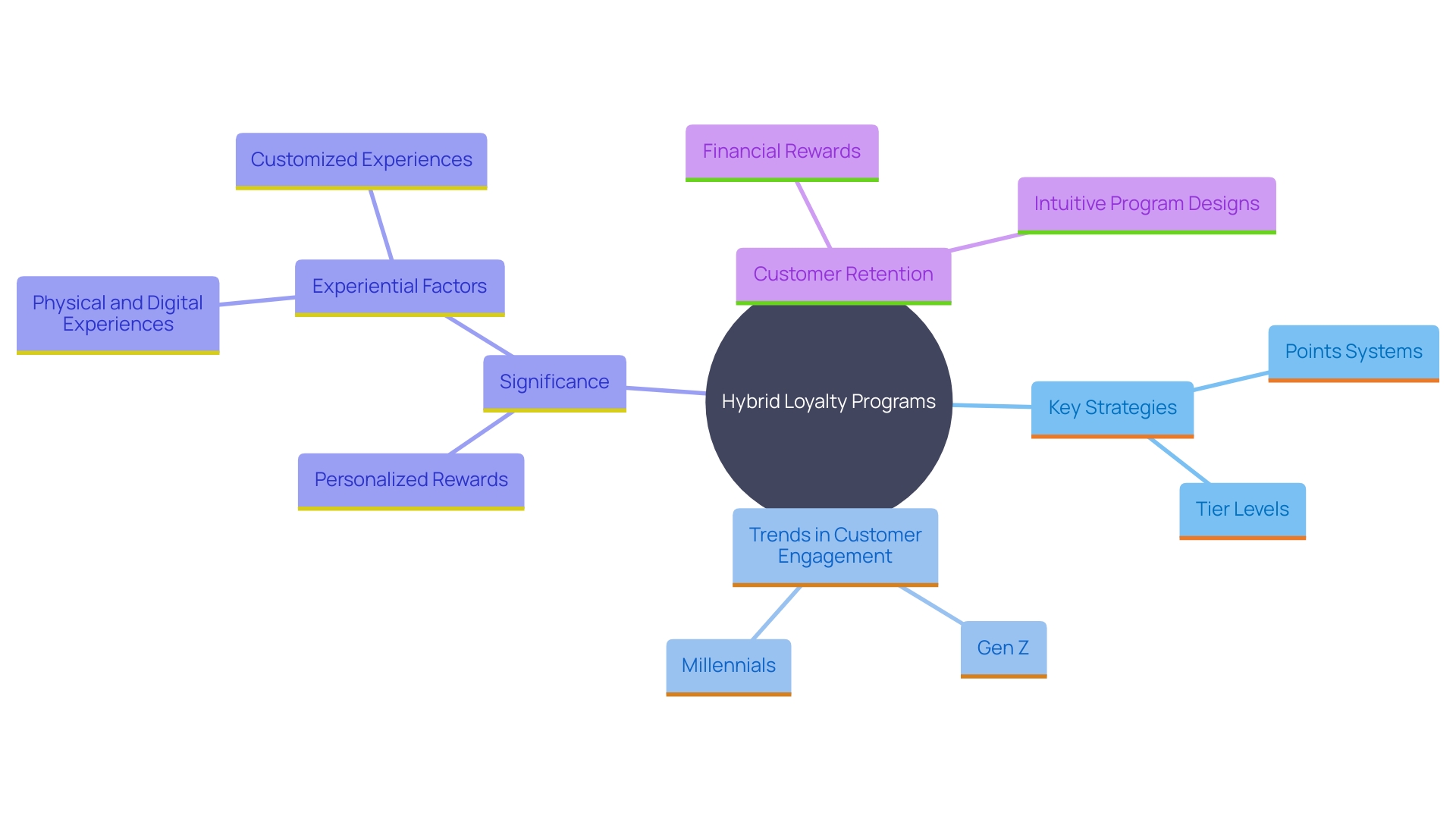
Gamified Challenges: Engaging Customers Through Play
Gamified challenges are a compelling way to engage clients by encouraging them to complete specific tasks or challenges for rewards. 'Fitness companies, for example, frequently develop challenges that reward participants for reaching fitness objectives, incorporating enjoyment and rivalry into the engagement experience. By harnessing the competitive drive and reward-seeking tendencies of consumers, companies can greatly enhance engagement and commitment. Studies have shown that gamification can increase client engagement by 48%, making it an effective strategy for enhancing user experience and building long-term relationships. For instance, including milestones in a gamified rewards program can foster a sense of advancement in the client's experience, while badges can enhance emotional attachment and brand recognition. Additionally, integrating AI technologies into gamification strategies can provide valuable insights and recommendations, ensuring that the challenges resonate with the target audience and maximize their impact. This combination of gamification and AI creates a powerful instrument for enhancing satisfaction and business growth.
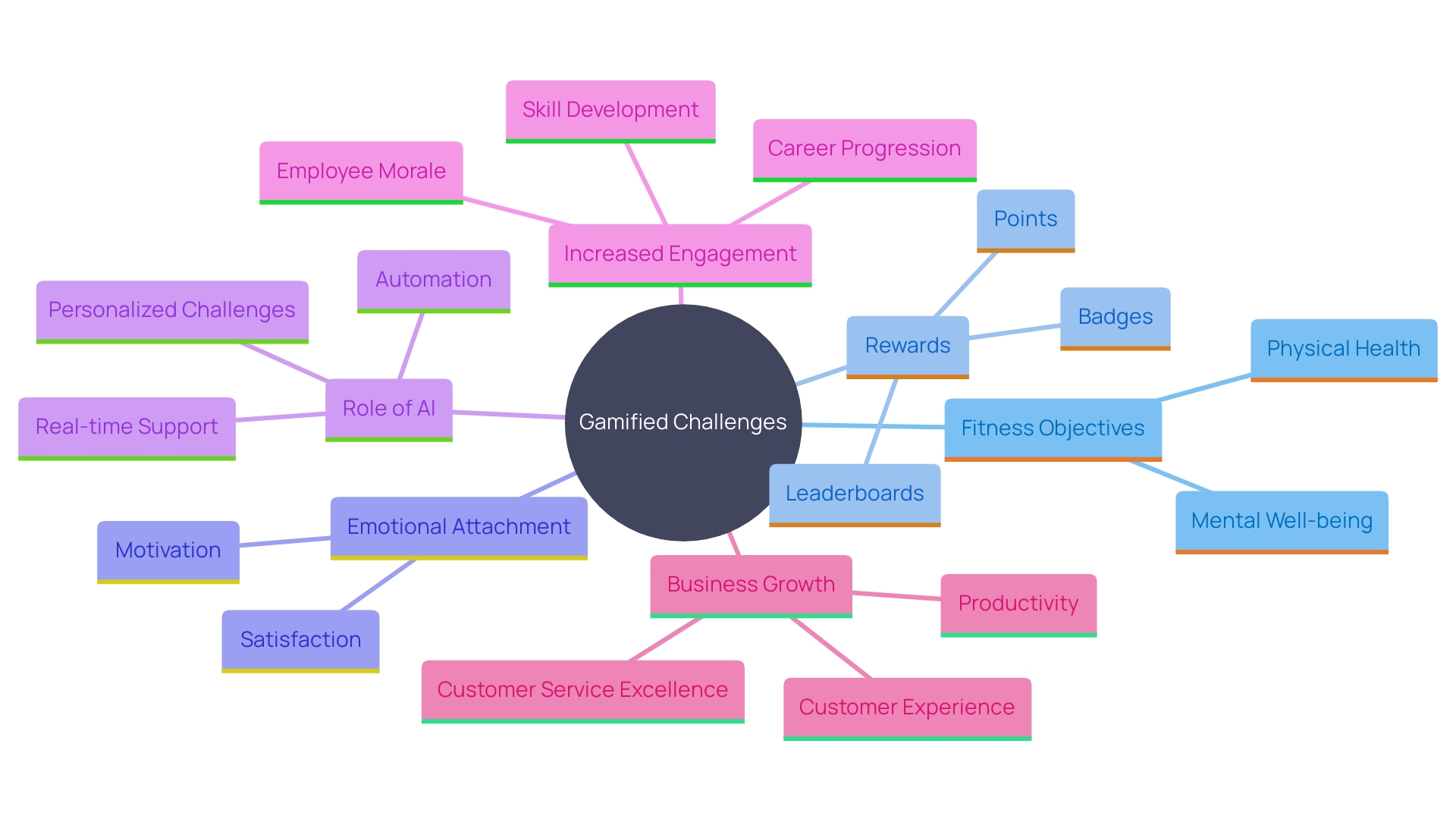
Experience-Based Rewards: Focusing on Unique Experiences
Experience-focused incentives emphasize distinctive and unforgettable moments rather than conventional price reductions, greatly improving patron retention. One prime example is Airbnb, which provides individuals exclusive access to local experiences or events, making their loyalty feel more valuable and unforgettable. This approach is supported by the increasing trend among credit card companies to diversify their rewards programs beyond travel, incorporating dining and unique experiences to appeal to a broader audience. As per a survey, 49% of consumers have abandoned a brand because of inadequate service, highlighting the significance of providing outstanding and captivating rewards.
Airbnb's approach is in sync with the wider sector movement towards integrating commitment into everyday experiences and transactions, which has shown to be effective in enhancing client retention. For instance, Shake Shack's experience with launching new products highlighted the critical role of effectively communicating new concepts to patrons to create memorable experiences. In the same way, data insights and immediate reactions to client behavior are essential for designing engaging retention strategies.
Furthermore, the incorporation of distinctive experiences into reward systems is not just about offering benefits but also about fostering a feeling of exclusivity and personalization. Over half of adults worldwide believe that offering points or reward systems is the top way to ensure repeat engagement, according to a recent survey. By providing unique experiences, companies can engage with this feeling, cultivating a stronger emotional bond with their clients and guaranteeing lasting commitment.
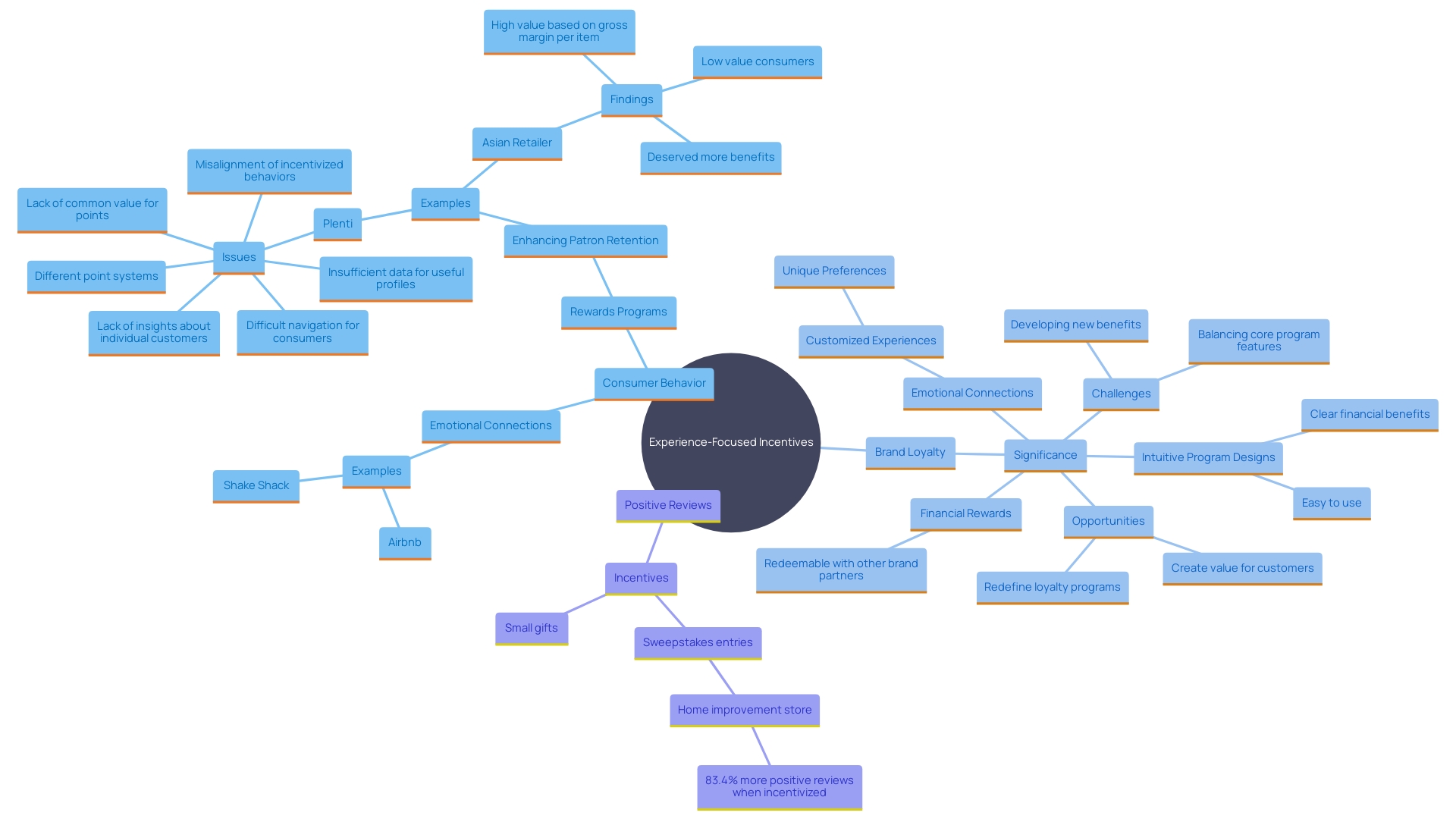
Social Media Integration: Leveraging Online Engagement
Combining loyalty programs with social networks can transform consumer interaction and product allegiance. By encouraging individuals to share their acquisitions or experiences on social platforms, companies can cultivate a sense of community and promote word-of-mouth marketing. Statistics indicate that almost two-thirds of social media users posted content about their recent travels, emphasizing the opportunity for companies to utilize this behavior for greater exposure. Tailoring rewards for social sharing can greatly enhance participant engagement and contentment.
Moreover, collaboration with influencers can amplify these efforts. Individuals with a following, relied upon by their supporters, can successfully advocate for reward initiatives, motivating their audience to interact with the company. With 1 in 3 Gen Zers making purchases based on influencer recommendations, the impact of such collaborations is profound. Furthermore, brands can utilize the vast data from social media interactions to gain valuable insights about their clients, helping to refine their marketing strategies and enhance user experiences.
Reports indicate that despite financial difficulties, 70% of major retailers have sustained or expanded their devoted clientele, with 53% observing an increase in participation in rewards programs. This highlights the significance of creative methods in loyalty initiatives, such as incorporating social media, to maintain and enhance patron loyalty.
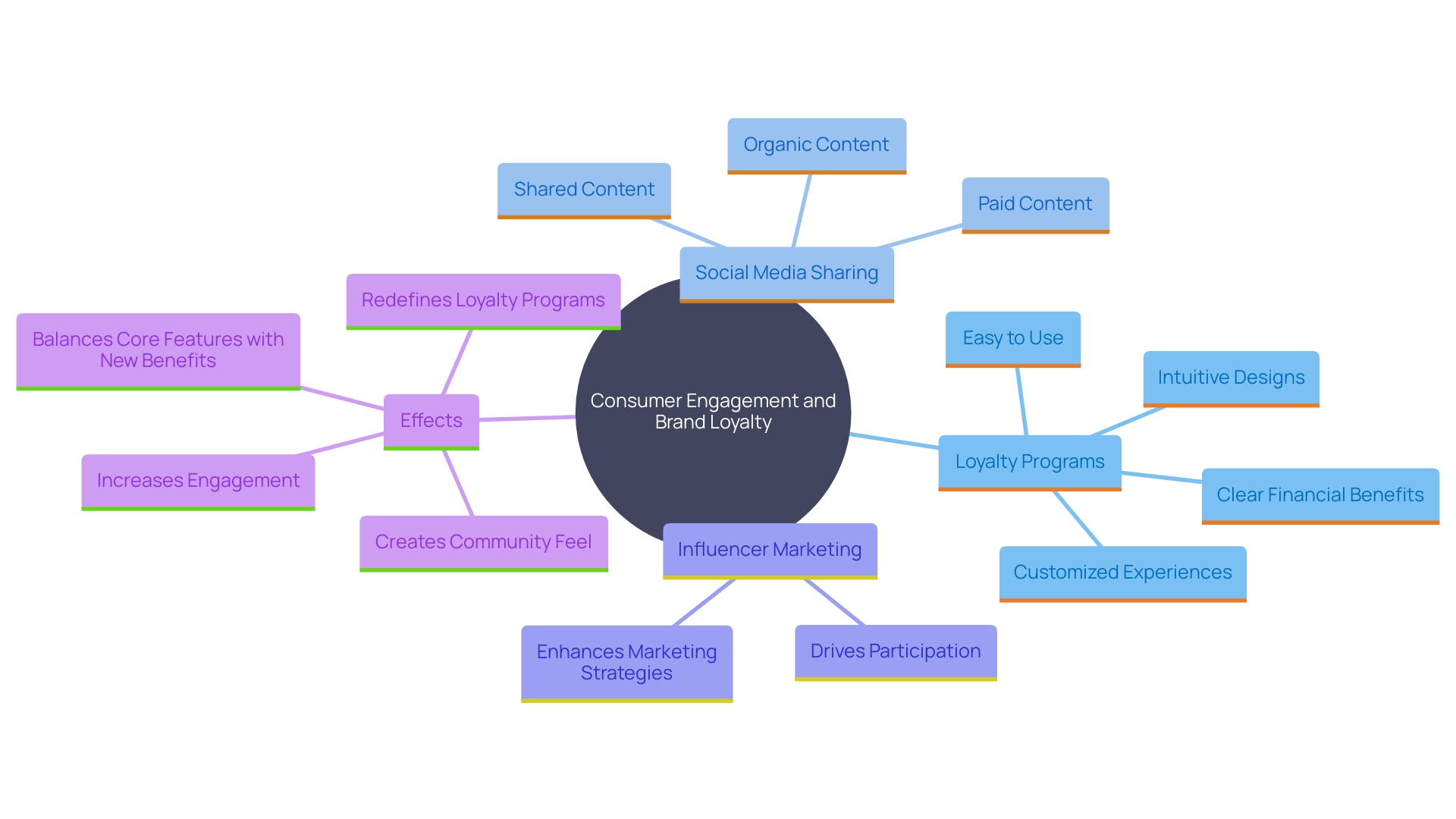
Value-Based Programs: Earning Points Beyond Purchases
Value-based programs provide individuals the chance to earn points through various activities beyond just purchases, such as writing reviews or referring friends. This multifaceted strategy not only increases sales but also significantly improves client engagement and product advocacy. According to a 2024 survey by Marigold and Econsultancy, over half (55%) of adults worldwide believe that offering points or reward systems is the top way to encourage repeat business. Furthermore, engaged individuals, who are more likely to make repeat purchases, also tend to become brand advocates, spreading positive word-of-mouth and driving new client acquisition. Making it easier for individuals to register, earn, and redeem rewards is essential, as complexity can discourage participation. As noted by industry expert Stephens, keeping programs straightforward while creatively enhancing them around the edges can maintain customer interest and loyalty.
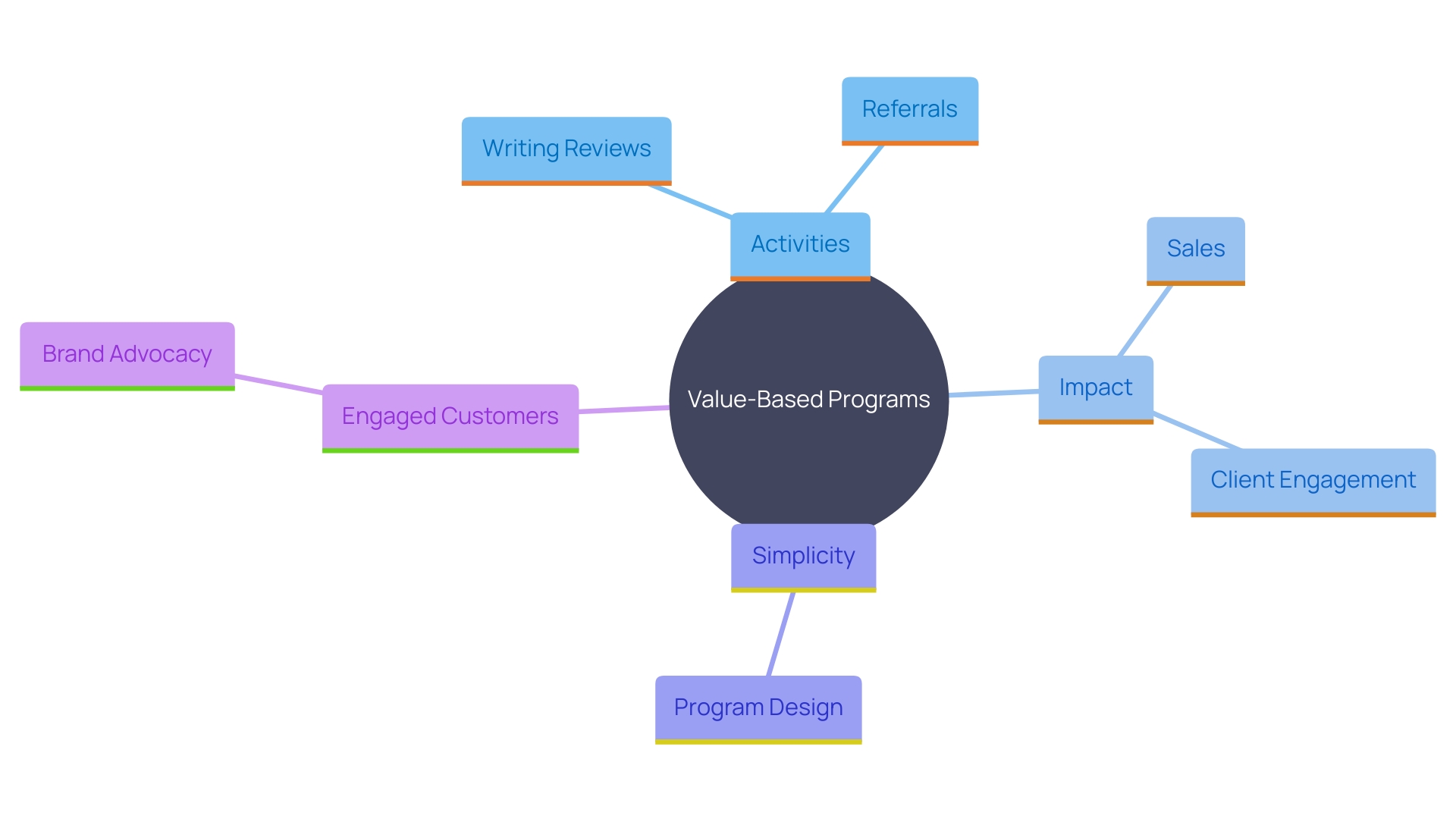
Conclusion
In today's competitive landscape, businesses must prioritize customer loyalty to create lasting relationships that drive repeat purchases. The exploration of various loyalty program types, from points systems to hybrid models, reveals that a successful strategy is not merely about rewarding purchases but also about enhancing customer experiences and engagement. Programs that prioritize simplicity, personalization, and transparency are more likely to resonate with consumers and foster loyalty.
Points programs have proven effective, particularly when they are straightforward and allow for easy redemption. Tier-based and membership programs reinforce this concept by encouraging higher spending through exclusive benefits and creating a sense of belonging. Community engagement and unique experiences further deepen customer connections, showcasing that loyalty is built on shared values and memorable interactions.
Additionally, the rise of gamification and social media integration highlights the importance of innovative approaches in driving engagement. By tapping into the competitive nature of consumers and leveraging online platforms, brands can create vibrant communities that enhance loyalty. Furthermore, value-based programs that reward customer advocacy and involvement beyond purchases demonstrate the multifaceted nature of modern loyalty strategies.
In conclusion, businesses seeking to refine their customer loyalty programs must adopt a holistic approach that combines various strategies tailored to their target audience. By focusing on personalization, seamless experiences, and community engagement, brands can cultivate a loyal customer base that not only returns for future purchases but also advocates for the brand within their networks.





